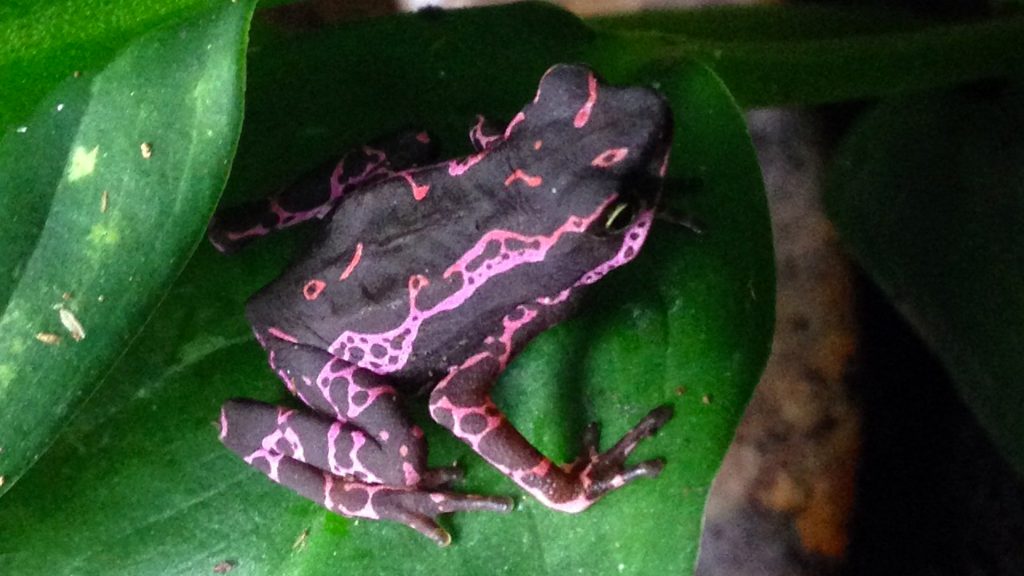
This unreal-looking frog may appear cartoonish and whimsical, with colors rarely spotted in nature. But it is a real species, discovered relatively recently off the Atlantic coast of South America.
Atelopus includes a large genus of toads, more commonly referred to as harlequin toads or stubfoot toads. Members of the genus are endemic to areas of Central and South America including Costa Rica and Bolivia. These brightly colored frogs are typically diurnal and persist in higher elevation waterways.
A survey of the Nassau Plateau by Surinamese scientists Paul Ouboter and Jan Mol resulted in the discovery of a purple species of Atelopus toad, a new and unusual member of the species boasting fluorescent lavender markings juxtaposed against otherwise sleek, eggplant-colored skin. It is casually referred to as the Purple Harlequin Toad.
This discovery was made in 2007 and although the discovery of a new species serves as a glimmer of hope for the generally declining Atelopus genus, the purple harlequin toad is already threatened by habitat loss caused by illegal gold mining prevalent in the surrounding region.
Threats to the more general Atelopus genus include the introduction of new species, pollution, and habitat loss due to human encroachment.
A nonprofit environmental company known as Conservation International has studied the threat of illegal gold mining on the small purple harlequin toad population.
“When you go to these places that are so unexplored and so remote, we do tend to find new species … but most of them are insects,” stated Leeanne Alonso of Conservation International, who was the leading member of the survey team. “What’s really exciting here is we found a lot of new species of frogs and fish as well.”
Video:




